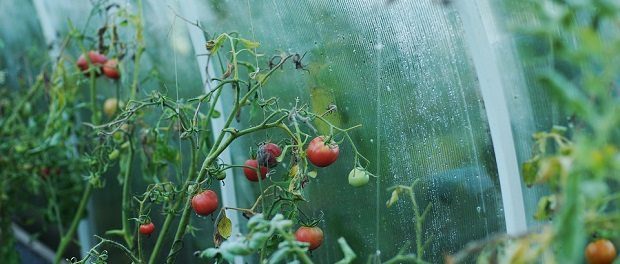[dropcap style=”font-size:100px; color:#992211;”]K[/dropcap]udos to the Floridian researchers involved in turning waste tomatoes into an energy source by harnessing the ruby fruit’s potential in electrochemical cells.
Nevertheless, surely it’s time someone figured a way to make use of the tomato’s most astounding power… the ability to remain superheated to gumscalding agony levels despite the pizza having left the oven AGES ago. Uncanny.
*Peels skin off palate*
A team of scientists is exploring an unusual source of electricity — damaged tomatoes that are unsuitable for sale at the grocery store. Their pilot project involves a biological-based fuel cell that uses tomato waste left over from harvests in Florida.
The researchers present their work today at the 251st National Meeting & Exposition of the American Chemical Society (ACS). ACS, the world’s largest scientific society, is holding the meeting here through Thursday. It features more than 12,500 presentations on a wide range of science topics.
“We have found that spoiled and damaged tomatoes left over from harvest can be a particularly powerful source of energy when used in a biological or microbial electrochemical cell,” says Namita Shrestha, who is working on the project. “The process also helps purify the tomato-contaminated solid waste and associated waste water.”
Shrestha is a graduate student in the lab of Venkataramana Gadhamshetty, Ph.D., P.E., at the South Dakota School of Mines & Technology. They are collaborating on this project with Alex Fogg, an undergraduate chemistry major at Princeton University. Other project collaborators include Daniel Franco, Joseph Wilder and Simeon Komisar, Ph.D., at Florida Gulf Coast University.
Tomatoes are a key crop in Florida, notes Gadhamshetty. He stresses that the project is important to the state because Florida generates 396,000 tons of tomato waste every year, but lacks a good treatment process.
Gadhamshetty began working on the topic as a professor at Florida Gulf Coast University. “The project began a few years ago when Alex visited my lab in Fort Myers, Florida, and said he was interested in researching a local problem, especially local tomatoes grown in our state and the large waste treatment issue,” Gadhamshetty says. “We wanted to find a way to treat this waste that, when dumped in landfills, can produce methane — a powerful greenhouse gas — and when dumped in water bodies, can create major water treatment problems.”
So, the team developed a microbial electrochemical cell that can exploit tomato waste to generate electric current. Shrestha explains, “Microbial electrochemical cells use bacteria to break down and oxidize organic material in defective tomatoes.”
The oxidation process, triggered by the bacteria interacting with tomato waste, releases electrons that are captured in the fuel cell and become a source of electricity. The natural lycopene pigment in tomatoes, the researchers have found, is an excellent mediator to encourage the generation of electrical charges from the damaged fruits.
Some of their results proved to be counterintuitive. “Typical biotechnological applications require, or at least perform better, when using pure chemicals, compared to wastes,” Gadhamshetty notes. “However, we found that electrical performance using defective tomatoes was equal or better than using pure substrates. These wastes can be a rich source of indigenous redox mediators and carbon, as well as electrons.”
At the moment, the power output from their device is quite small: 10 milligrams of tomato waste can result in 0.3 watts of electricity. But the researchers note that with an expected scale up and more research, electrical output could be increased by several orders of magnitude.
According to calculations by Shrestha, there is theoretically enough tomato waste generated in Florida each year to meet Disney World’s electricity demand for 90 days, using an optimized biological fuel cell.
“Our research question at this time is to investigate the fundamental electron transfer mechanisms and the interaction between the solid tomato waste and microbes,” Gadhamshetty notes. They plan to improve the cell by determining which of its parts — electrode, electricity-producing bacteria, biological film, wiring — are resisting the flow of electricity. Then they will tweak or replace that part.
Source: Eurekalert/American Chemical Society

Some of the news that we find inspiring, diverting, wrong or so very right.





















